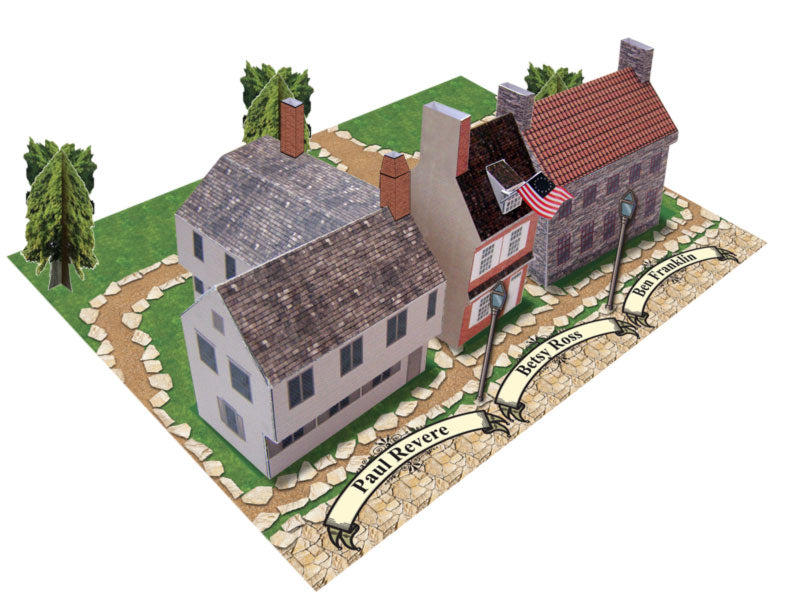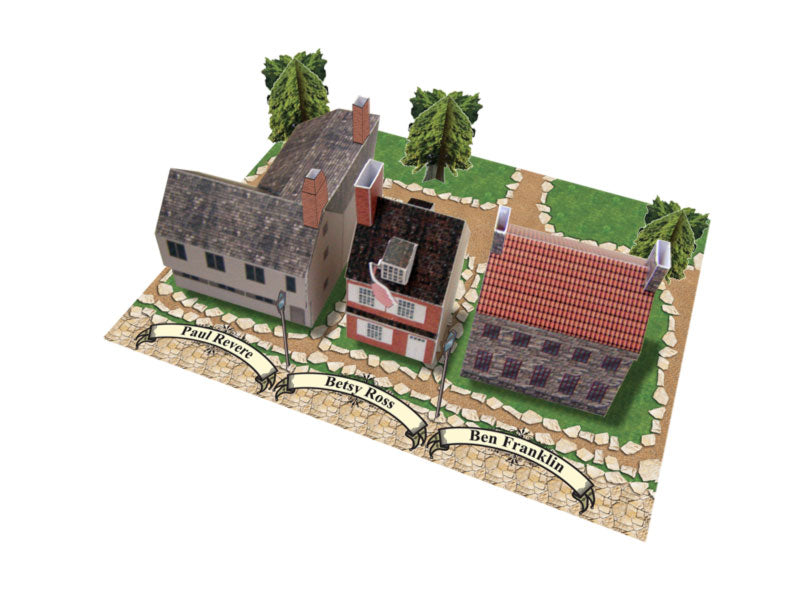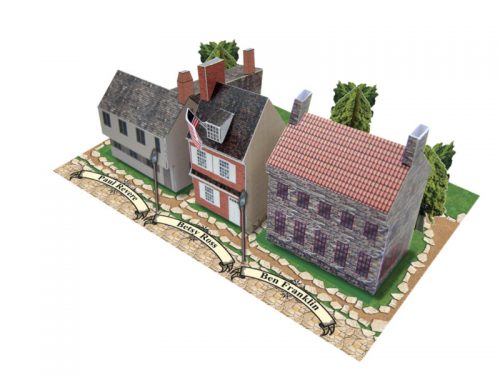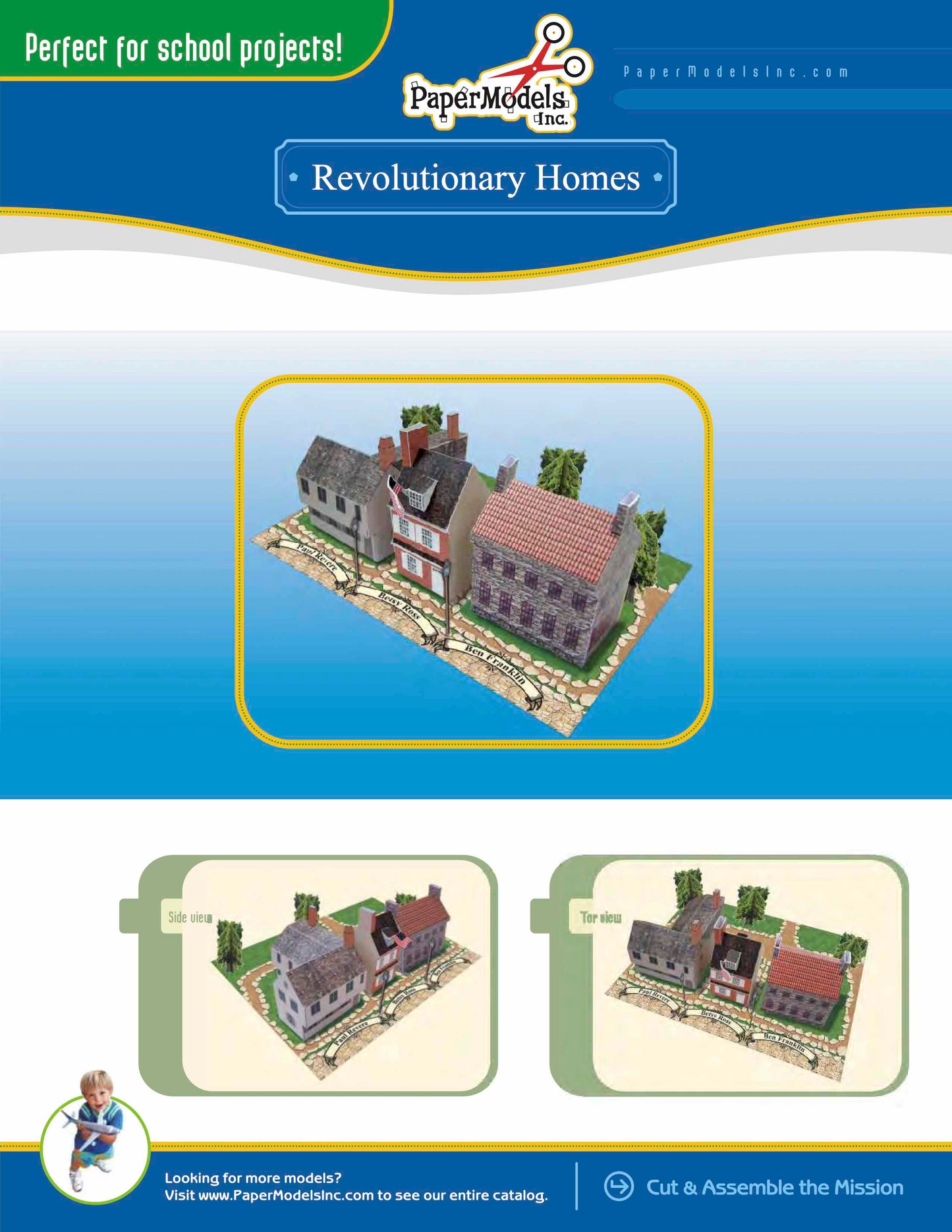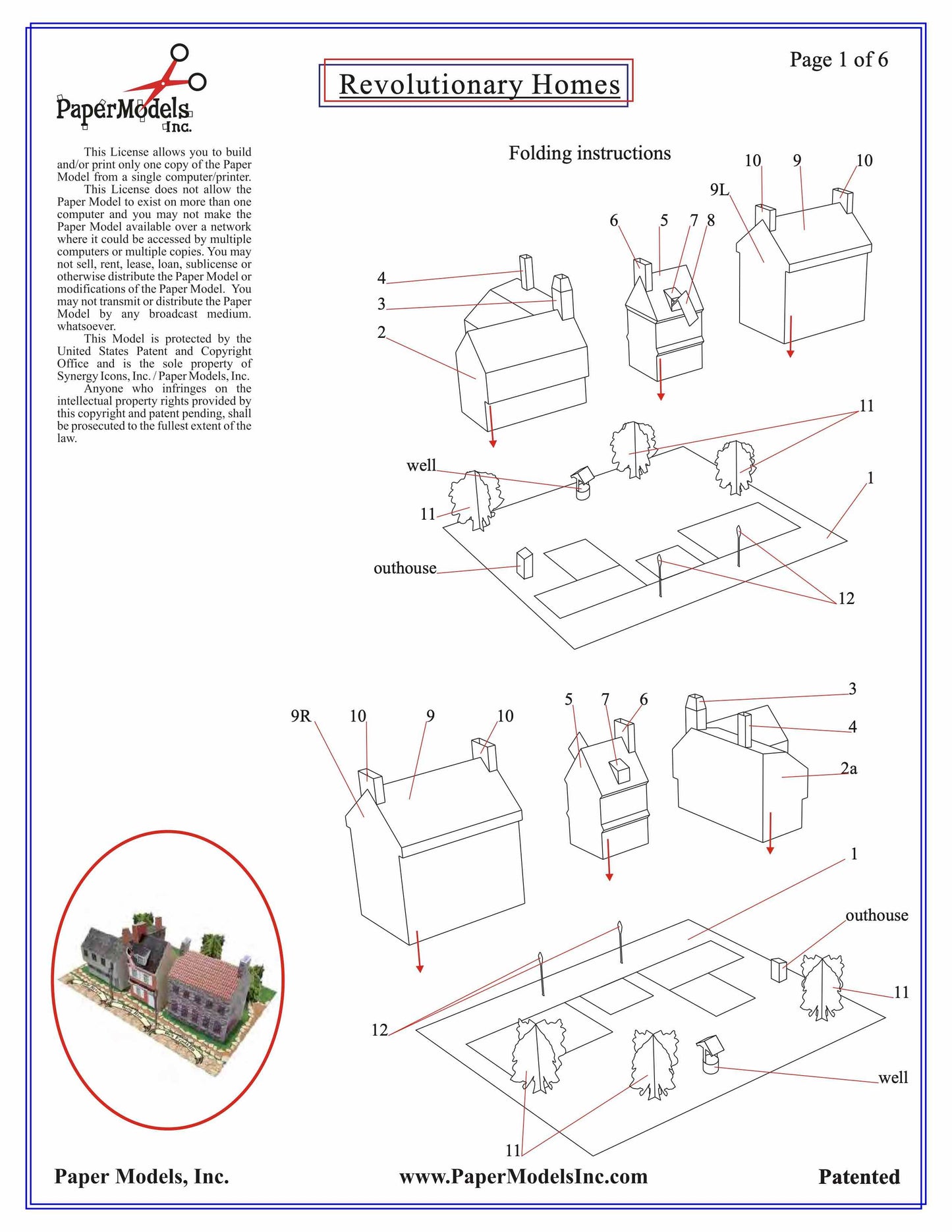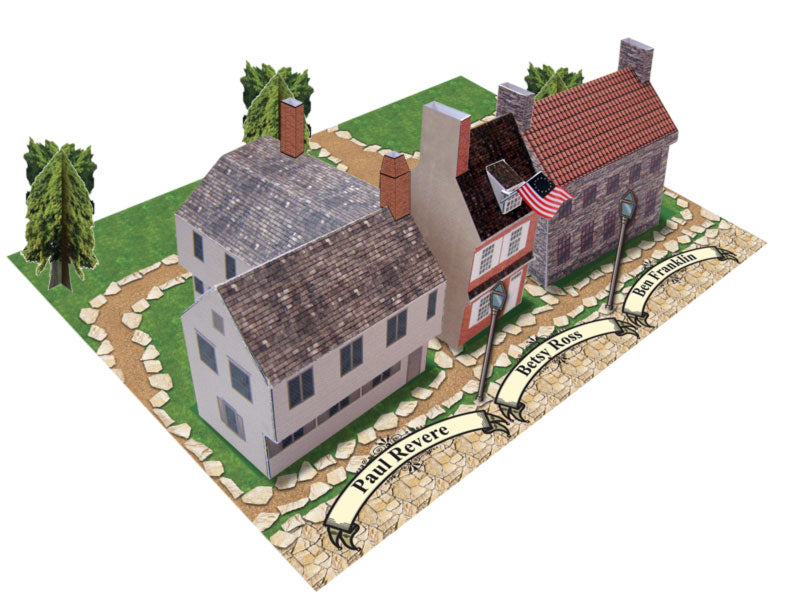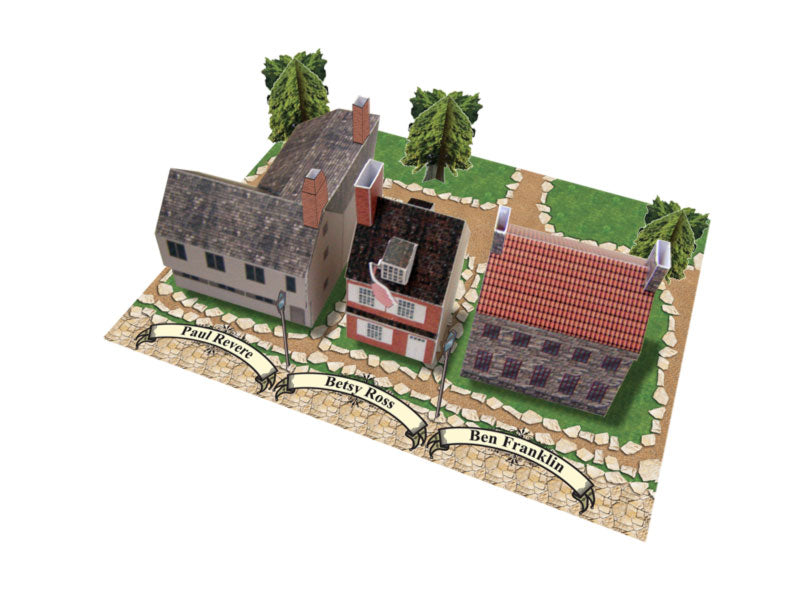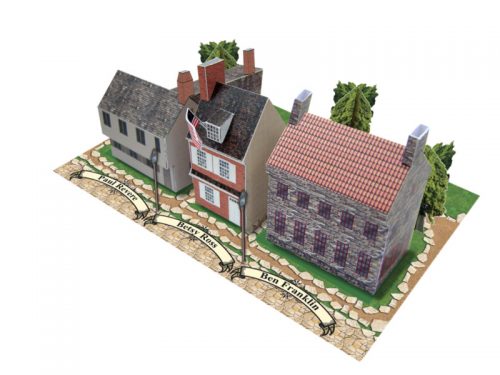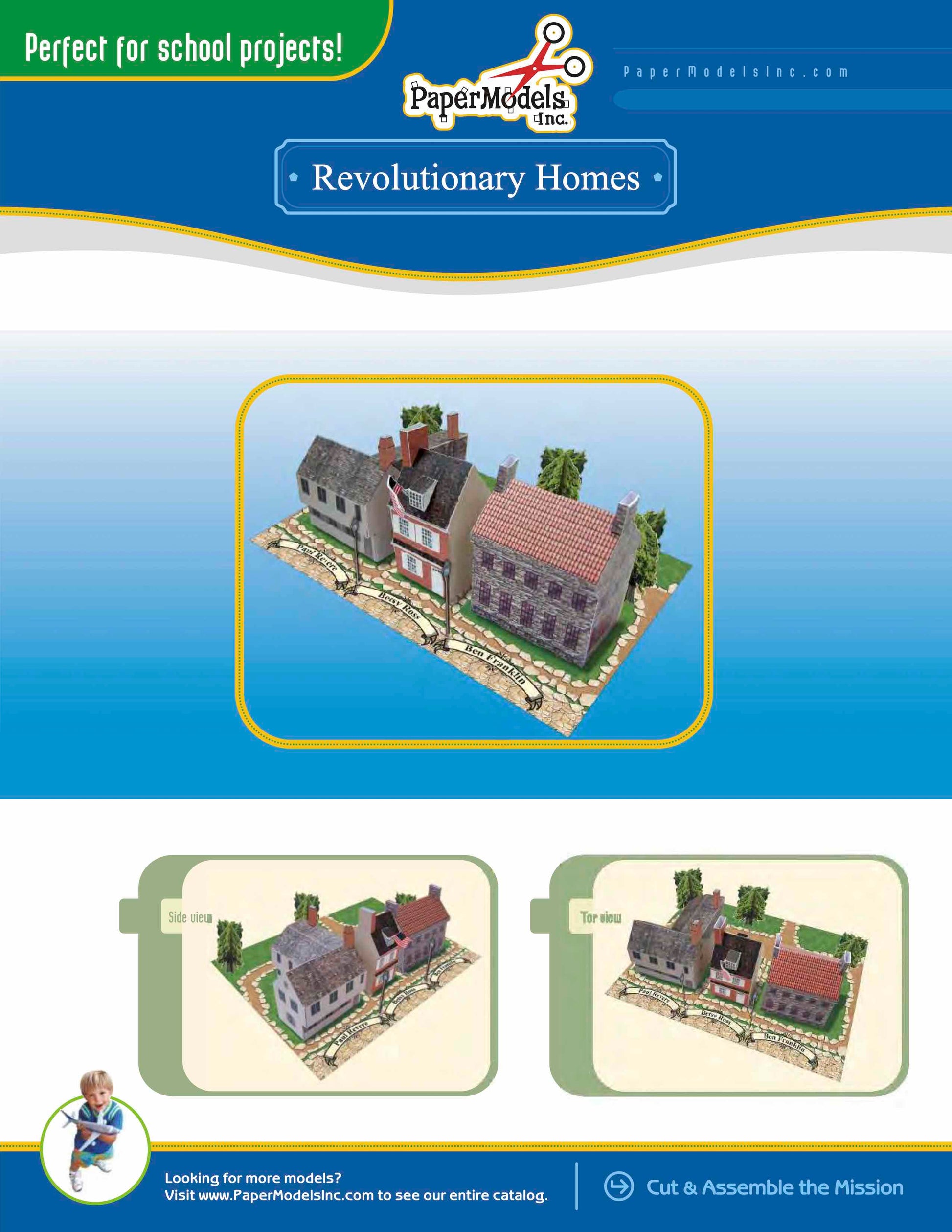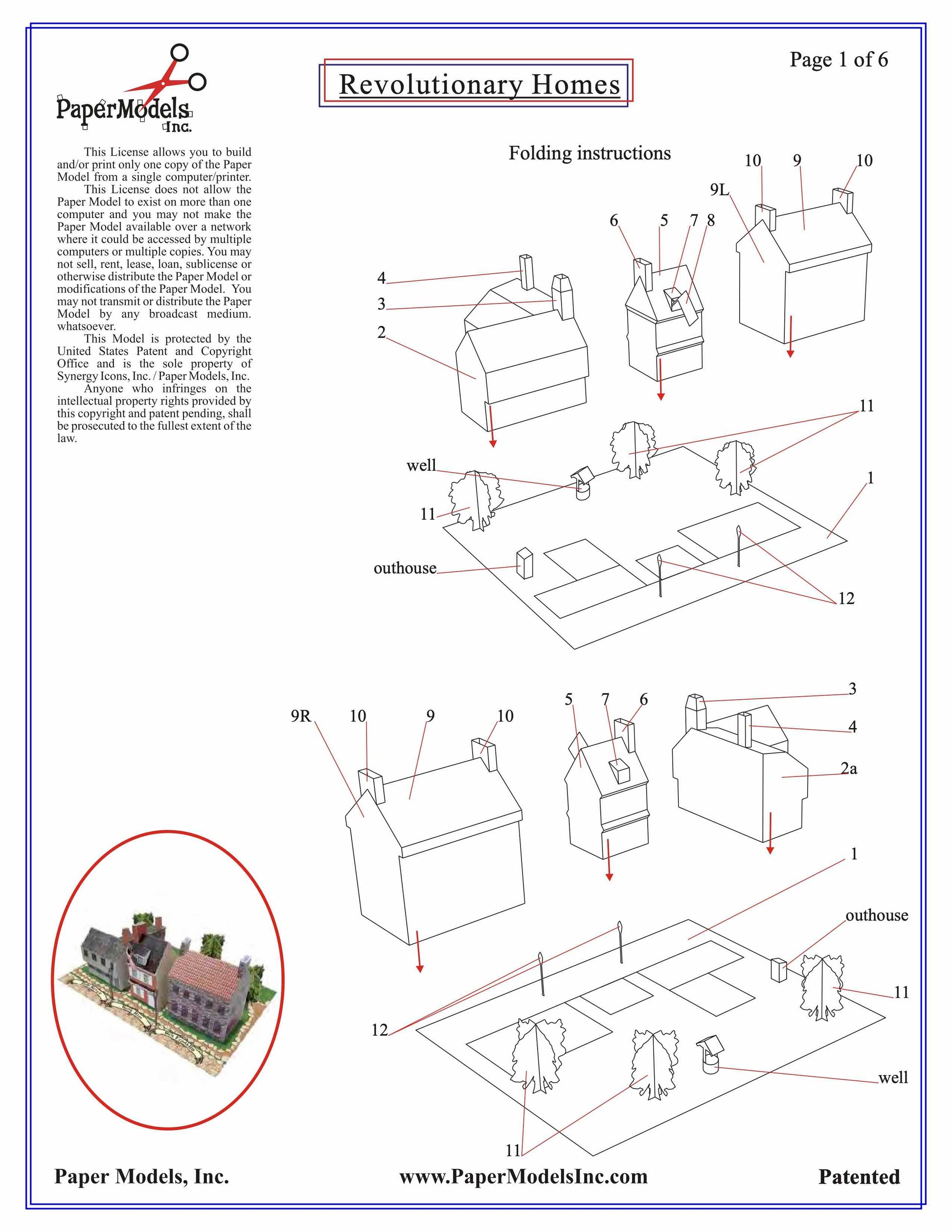Revolutionary Homes - Ross, Revere, & Franklin - Paper Model Project Kit
Revolutionary Homes - Ross, Revere, & Franklin - Paper Model Project Kit
No se pudo cargar la disponibilidad de retiro
🌟 Welcome to Paper Models Online – Your Shortcut to Academic Excellence! 🌟
Are you tired of stressing over last-minute school projects? Look no further! Paper Models Online is here to make your academic life a breeze.
🚀 Why Choose Us?
At Paper Models Online, we understand the pressure of looming deadlines and the desire for that coveted "A" grade. That's why we've crafted the perfect solution for you! Whether you're a student aiming for extra credit, a parent looking for quality time with your kids, or just someone in need of a break from the chaos, our paper models are your ticket to success!
💻 Instant PDF Download OR Pre-Printed & Shipped
You're in control! Choose from our instant PDF download, starting at just $9.95 for the 7"x10" size or $11.95 for the 10"x13" size.
Print it on your home or office printer using regular paper, or opt for the hassle-free pre-printed option. We'll ship it directly to your doorstep for a flat $5 fee via USPS First-Class Parcel, ensuring you get it in 1-3 days!
✂️ Easy Assembly, Maximum Impact
With just a pair of scissors, some glue, and an hour of your time, you can turn these paper sheets into stunning three-dimensional architectural replicas or complete science projects. The images on our website are real models made from our kits, and we even provide a history to help you craft an impressive report.
🎨 Unleash Your Creativity
Not into mission kits? No worries! Our models double as templates for your creative genius. Paint, trace, adjust sizes—your imagination is the only limit! Create a custom masterpiece that reflects your unique style and personality.
🛒 The Buying Process Made Simple
- Choose Your Size: 7"x10" or 10"x13"
- Choose Your Delivery: Instant PDF download or pre-printed and shipped
- Purchase Your Model: It's that easy!

📦 Typical Kit Sample
Each kit includes 8 to 18 pages, providing everything you need to bring the model to life. An "exploded view" guides you through assembly, and a complimentary history adds that extra touch for your report. Impress your teacher not just with creativity but also with your research skills!
Don't let deadlines stress you out. Choose Paper Models Online for your next school project, and let us be Your Best Way To Get An "A"! 🌟
 |
 |
 |
| Exploded View | Sample Pieces | Finished Model |
Free History For Your Report
Revolutionary Homes
Franklin CourtBenjamin Franklin, one of the Founding Fathers of The United States of America, was born in Boston on January 17, 1706, to Josiah Franklin and Abiah Folger. A first- generation American (Josiah was born in England), Benjamin Franklin would live a varied and interesting life, acquiring many skills, leading him to become one of American history's most important diplomats, inventors, scientists, philosophers, printers and authors.
When Benjamin Franklin was 17, he traveled to Philadelphia with his future wife, Deborah Reed Rogers, to visit her family on their large parcel of land. Married by common law marriage, the couple inherited the existing house and surrounding land after the passing of Deborah's parents. The land was located off of High Street (current day Market Street), and was fast becoming a center of activity in the colonial city. The couple commissioned friend and architect Robert Smith to begin plans for a house on the couple's newly- acquired property. Construction took two years, with the house being finished in 1765. While it was being built, Franklin traveled to England on behalf of the United States as a representative for the colony, and had not yet returned by the time the house was finished. With Franklin's permission, his daughter Sarah and husband Richard Bache moved into the house. When Franklin returned from England in 1775, he realized that his dream for him and Deborah to move into the house was not meant to be; his wife had passed away of a stroke the year before. The new house was, however, bustling with grandchildren, and he lived with his new expanded family for 16 months before once again returning to Europe.
Serving in France as a representative of the Continental Congress, Franklin would enjoy his time in Paris and be caught up in his duties so much that he would not return to Philadelphia for ten years, until 1785. Upon his return, Franklin set his immediate attention to the expansion of the house on the east side, to include a library, guest room, a drawing room, and a cellar. These features were very rare in colonial homes of the time, however Franklin had grown accustomed to expansive home space and elegant rooms during his European travels, and desired his own home in Philadelphia to reflect such taste and opulence. In addition, the newly-remodeled house was elegantly furnished with fine European housewares that Franklin had purchased overseas and shipped back to America.
The new additions wouldn't be enjoyed long, however, as Franklin passed away five years after his return, on April 17, 1790. He was buried alongside his wife in the city he loved. The house and furnishings were inherited by his daughter and husband, who still lived in the home. However, the house was destroyed in 1812 during an expansion project for Market Street. Today, Franklin Court sits on the land originally owned by the family, and serves as a memorial. While the actual house is long gone save for a few minor archaeological elements, a “ghost house,” consisting of white steel pipe in the outline of the original structure, sits on the actual site of the house today.
Revere House
Paul Revere, a silversmith and patriot of the American colonies, was born in Boston's North End on December 22, 1734. While serving as a patriot, Revere became famous during his “midnight ride,” while serving as a messenger in Lexington and Concord. He was responsible for warning the colonial troops that the British soldiers were arriving during the American Revolutionary War, as immortalized by Henry Wadsworth Longfellow in the poem “Paul Revere's Ride.”
In 1770, Paul Revere purchased a home for himself and his family at 19 North Square in his hometown of Boston. The site of the home already had significant history before Revere purchased it. It was originally the location of Boston's Second Church, which was destroyed by The Great Fire of 1676. A local merchant by the name of Robert Howard built a three-story home on the location four years later, and later sold it to Revere in 1770. The house had already gone through two renovations, including the addition of a two-story lean-to on the side of the house, and a modified slanting roof line to keep up with the local architectural trends of the time. Revere further added to the home, adding a rear chimney and a kitchen (kitchens were usually detached from the main home before this period).
The house was sold in 1800, and the new owners further remodeled the building, converting the upper two stories to tenant rentals and the bottom floor as shops. A bank, a candy store, cigar store, and a produce shop are all businesses that occupied the first floor at one time or another. The house remained in this condition for close to 100 years, until it was set to be demolished. To prevent this from happening, the house was purchased by Revere's great-grandson, John P. Reynolds, Jr. Reynolds teamed with historical architect Joseph Chandler to remodel the house and return it to the condition that it was during Revere's residency. Furnishings that Reynolds believed to have belonged to Revere were added to the upstairs rooms, the lean-to was removed, and modifications were made to remove the shop space on the first floor. In April 1908, The Paul Revere House was officially opened, creating one of the first historical house museums in America.
Betsy Ross Home
Betsy Ross was born January 1, 1752, in Philadelphia, Pennsylvania, the 8th of 17 children. Growing up under the guidance of the Society of Friends (a strict Quaker sect) much of her young life – including her future career – were monitored and directed by her father. Under his guidance, she became an apprentice upholsterer, working with a man by the name of William Webster, who was also teaching a young man by the name of John Ross. Falling in love, the two eloped (they could not marry – she was Quaker and he was Episcopalian, and her faith did not allow inter-religious marriages) in 1773 at a New Jersey tavern. No longer allowed to be part of the Quaker demonstration for marrying outside of her faith, the two soon started their own fabric business and began a new life for themselves in the Christ Church just before the start of the American Revolutionary War. As a member of the Pennsylvania militia, John Ross was mortally wounded in an attack in 1776, leaving Betsy Ross to become one of the first widows of the American Revolutionary War. She passed away in her city at the age of 84, in 1836.
Little was said about Betsy Ross or her importance to American history until the Centennial Celebration of America in 1876, when Ross' granddaughter, the President of the Philadelphia Historical Society, published a story regarding her grandmother's creation of the first American Flag.
In the story, it is claimed that the newly-widowed Betsy Ross desired to use her skills in service of the country for which her husband died. In doing so, she had private meetings with patriots George Washington, George Ross, and Robert Morris, to discuss the creation of a new flag, which would include a 5-pointed star.
Except for the article from Ross' granddaughter, no substantial evidence was offered in support of Ross being able to create the flag, and a fairly-complicated 5-pointed star, at a fast enough rate that would be needed to supply the new country with a large amount of flags. Even though the story offered little credible evidence, the legend of Betsy Ross made its way into history, crediting her with the creation of the flag. It wasn't until the mid-1990's that this story began to be seriously challenged. With the Ross family incapable of providing any solid proof, such as letters or receipts, of interaction with Washington or the other patriots, the idea of Betsy Ross being the creator and seamstress of the flags was not set to remain in the history books for much longer. It was also thought that a single seamstress would have been incapable of producing such large amounts of 5- pointed stars so quickly, since 6-pointed stars were the fastest to make (with the use of two triangles).
Betsy Ross' place within history was restored by an unlikely situation. In 1995, Phoenix- based innovator and writer Lon Safko happened upon an old museum in his hometown of Yonkers, New York, where his father had donated a Civil War-era Bible in his son's name in 1959. While speaking with curator regarding the donated Bible, the historian brought up the topic of Betsy Ross, and how it would have been impossible for a seamstress such as Ross to create so many 5-pointed stars. Using a technique he had learned in childhood, Safko quickly took a piece of paper and scissors, and told the historian that there was a way to create a perfectly-balanced 5-point star much faster than a simple 6-point star could be created with two triangles. Lon folded the paper a few times and quickly made one simple cut, and unfolded a perfectly-balanced 5-point star. The demonstration and Safko's techniques were taken by the historian to various historical committees. Even though the evidence of Ross as the creator was still circumstantial, it was the only evidence available, and just so happened to land in the favor of Betsy Ross. From that point on, Ross' place in history was secured.
The historic meetings with Washington, and the creation of the flag and 5-pointed star, are believed to have occurred at 239 Arch Street in Philadelphia, otherwise known today as The Betsy Ross House. Originally constructed in 1740, the house has had many renovations over the years, and today resembles little of what the house may have looked like in Ross' day. The house received a $25,000 historical renovation in 1937, but this did little to transform the house to its previous design, but did help to improve the architectural integrity of the structure. In 1774, the bones of Betsy Ross were moved to the site as part of the country's Bicentennial Celebration.
© Copyright – Paper Models, Inc. – All Rights Reserved
Share
